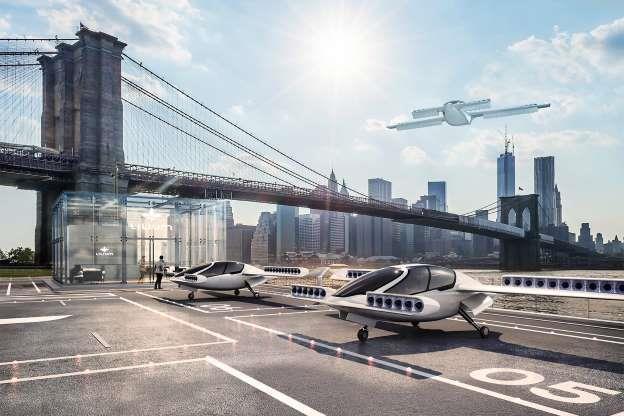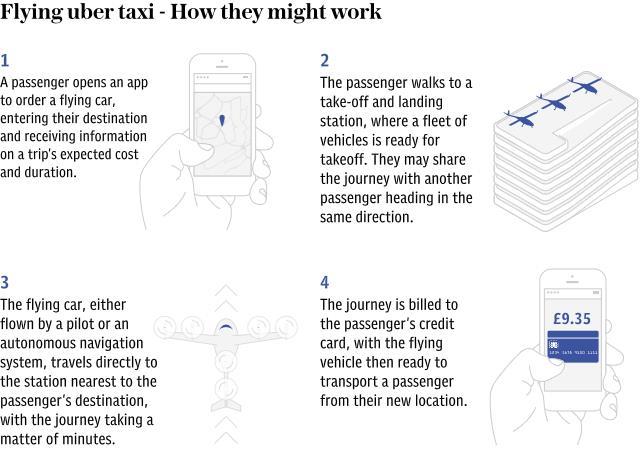A free template by Lucknowwebs.com for WYSIWYG WebBuilder 8
Nigel G Wilcox
Paragon Of Space Publication
© Copyright Reserved - United Kingdom
Ideal Screen Composition 1024 x 768
Best Flying Cars Around the World
© 2019 Lilium
Lilium
Lilium is the world's first fully-electric VTOL (vertical take off and landing) vehicle. It can transport up to 5 passengers, but rather than you being able to own one, it will be used as an air-taxi where you can pay-per-ride. This also means it won't actually drive on the road, but instead replace conventional taxis.
Lilium says you will able to use its jet to get from London to Paris in an hour, or Manhattan, New York to JFK Airport is just 5 minutes, instead of a 55 minute taxi ride. Prices are said to be affordable too, with that latter journey costing around $36. Lilium expects to have an operational fleet that can be summoned via an app by 2025. .
2019 -
The world’s first all-electric vertical takeoff and landing passenger jet has been unveiled after completing its first flight over the skies of Germany.
Lilium, which has built a five-seater jet-powered flying car, flew an unmanned test flight of its vertical takeoff and landing (VTOL) system earlier this month.
The Lilium jet has 36 engines that allow it to take off vertically, and has a maximum top speed of 185mph and a range of 185 miles.
The company aims to have a fleet of the five-seat aircraft - which can operate with a pilot or in drone mode - flying in cities worldwide by 2025, providing a pay-per-ride service that will be emission-free, five times faster than a car and produce less noise than a motorbike. According to executives, its flying taxi would let users whizz from London to Manchester in less than an hour. The company is also designing an on-demand app, similar to Uber, that would let passengers book a taxi from a local landing strip or purpose-built landing pad, to fly them on short haul trips.
“We have been working on this test for the last 20 months,” said Remo Gerber, chief commercial officer at Lilium. “Just on the take off and landing. What will come next is a test flight programme that will put it through its paces to get certified.”
Lilium said it had built the new aircraft in under two years, having grown its team from just 30 people in 2017 to more than 300 following an injection of $90m (£70m) from investing giants such as China’s Tencent and venture capital firm Atomico.
The aircraft has jet engines powered entirely by electricity, and is designed with no tail, rudder or gearbox. The flying taxi would initially be flown by a pilot, but the company has plans to implement autonomous flights.
For now, the five-seater version of its aircraft has yet to transfer from vertical takeoff to horizontal flight. It also has a two-seater passenger aircraft that it has tested.
Lilium head of test flights Leandro Bigarella said: “Our flight test program will now continue with increasingly complex maneuvers as we look towards our next big goal of achieving transition flight, which is when the aircraft moves seamlessly from vertical to horizontal flight.”
The test flight took place on May 4 near the company’s headquarters in Munich.
It is not the only company racing to launch a flying taxi. Uber has promised it will launch a fleet of air taxis in a pilot project in Dallas and Los Angeles by 2023. Boeing, meanwhile, is also building its own electric flying taxi aircraft.
Max Speed: 186mph in the air
Engine: 36 electric jet engines
Range: 186 miles
Courtesy: pocket-lint.com/
The Telegraph Matthew Field 16 May 2019 • 7:29am
SITEMAP
SCIENCE RESEARCH
ABOUT
Desk
MAIN INDEX
Flying Cars
S'sonic
Stealth
Menu
Space
Transport
Menu
Topic
Menu
Study
Menu






